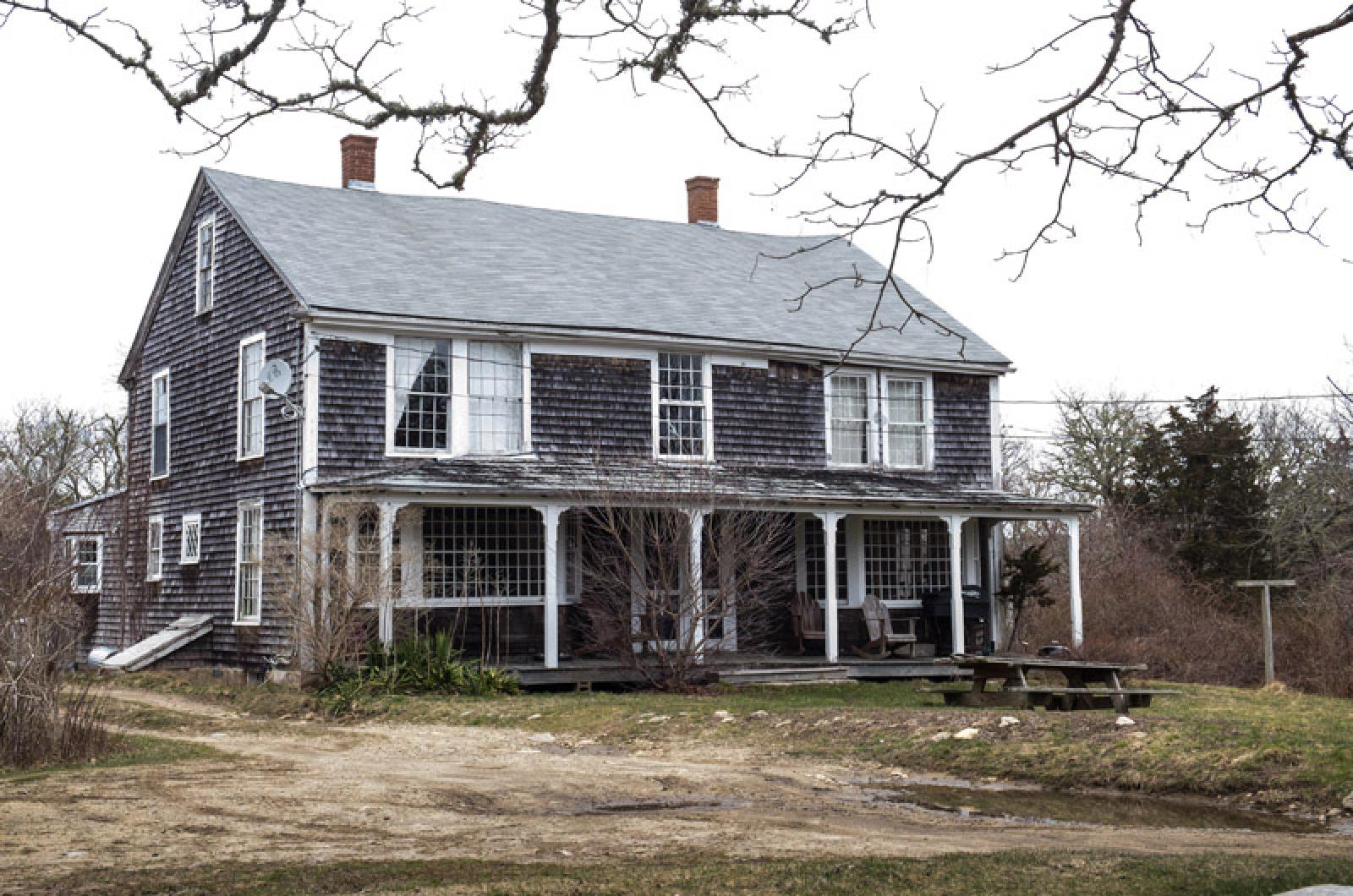After several years on the market, a historic house in Chilmark thought to have been a British headquarters during Grey’s Raid in 1778 may soon be torn down.
The town historical commission plans to hold a public hearing at the Chilmark town hall on March 31 at 5 p.m. to address the demolition request submitted by Catherine Fuller, whose family has owned the house since the 1960s. The home is often called the Great House, or the Benjamin Lambert-Robinson house, after its likely builder and later inhabitants.
Martha Smith, an Island broker with Jane Brown Real Estate, had the listing from around 2008 to 2012, before handing it off to another broker. She said the house was in bad shape even then and would need extensive work and a dedicated buyer.
“It’s not a restoration, it’s a complete rebuild,” Ms. Smith told the Gazette this week.
The house is no longer on the market, but was assessed this year at $627,700, about half its assessed value in 2011, according to the multiple listing real estate website LINK. Ms. Smith said she had listed the house for just under $1 million prior to 2012.
The two-story antique colonial at 51 State Road dates to around 1735, and is said to have been used as a headquarters while British troops confiscatedfirearms, sheep and other materials from up-Island in 1778. Moses Lambert, whose father Benjamin reportedly built the house, recalled seeing hundreds of sheep driven from Squibnocket during the raid. According to an eyewitness account held in the Dukes County archives, Mr. Lambert and fellow Chilmarker Jonathan Allen watched as the sheep went by, and schemed to take some back, assuming that some were theirs to begin with.
By the 1930s, the house belonged to Edward Robinson, and it remained in his family until being sold to John Fuller in 1965. The house “is rich in revolutionary history, and tradition, most of which is buried with the people who made it,” according to a notice in the Gazette at the time. “The Fullers are planning to restore some of its lost charm.”
The house has undergone a number of changes over the years, including the replacement of a central chimney with one at each end, and the addition of a rear ell. Two large bay windows with divided panes look out through a full-length porch toward the road. A smaller house was built on the property in 2003 and is assessed at $137,900.
The historical commission has yet to discuss the proposed demolition, but chairman Jane Slater said this week that it would likely be delayed by six months so the commission could advertise the house to prospective buyers who could restore it or move it to a new location. But there were few other options to save the house.
“There aren’t many rules and regulations on the book about what to do when an old house is too old,” Mrs. Slater said, adding that several historic houses in Chilmark have been demolished in recent years. The commission does not have the authority to deny such a request, she said.
Many old houses in Chilmark have been preserved by their owners, but some inevitably fall through the cracks. “There is hope, but not for all of them,” Mrs. Slater said.
The Great House will be put up for sale following the hearing.
An earlier version of this story reported that the public hearing before the historical commission was Wednesday, March 30. The correct date is Thursday, March 31. The hearing begins at 5 p.m.







Comments (57)
Pages
Comments
Comment policy »